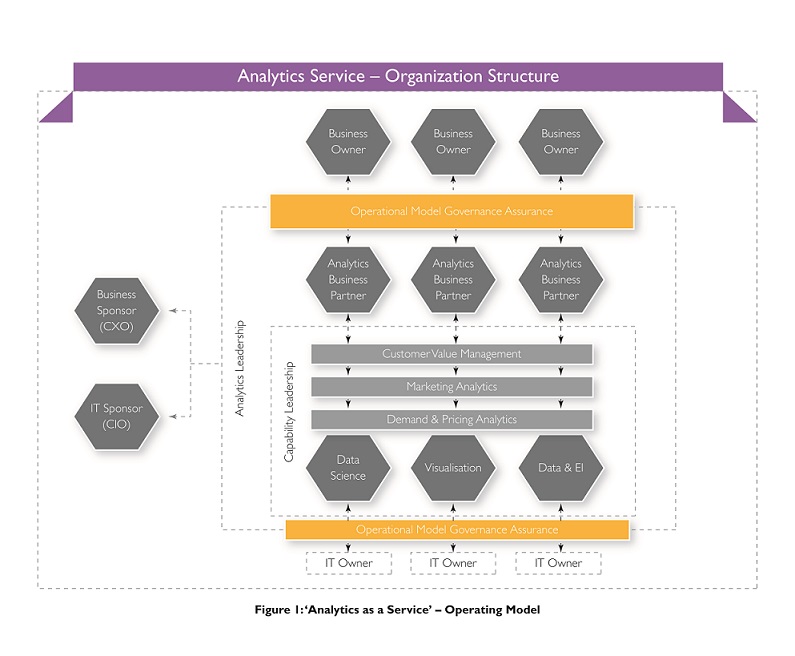 In this special guest feature, Sundarababu Vasudevan, Data Scientist and Analytics consultant at Wipro Limited explores how self-service analytics can provide chief analytics officers with unique capabilities and allow them to deliver speed and agility to companies. Sundarababu Vasudevan (Vasu) has over 19 years of experience as a Data Scientist and Analytics consultant. He has played various roles in the past, including business development, consulting for some of the leading Fortune 500 companies, and leading complex product development initiatives. In his current role within Wipro Analytics, he is leading the Analytics Consulting group and heading the ‘Data Discovery Platform’ initiative.
In this special guest feature, Sundarababu Vasudevan, Data Scientist and Analytics consultant at Wipro Limited explores how self-service analytics can provide chief analytics officers with unique capabilities and allow them to deliver speed and agility to companies. Sundarababu Vasudevan (Vasu) has over 19 years of experience as a Data Scientist and Analytics consultant. He has played various roles in the past, including business development, consulting for some of the leading Fortune 500 companies, and leading complex product development initiatives. In his current role within Wipro Analytics, he is leading the Analytics Consulting group and heading the ‘Data Discovery Platform’ initiative.
Every business function in an enterprise has a recognized need for actionable data insights. That is why analytics is being recognized as a key driver of decisions and as a business differentiator. In a competitive environment, every decision counts. Chief Analytics Officers (CAOs) are tasked with making decision-making easier for the enterprise – for anyone, anytime and anywhere. If the CAO fails to deliver actionable insights, it could mean loss of business momentum, customer attrition and market share erosion.
Is too much data becoming an issue?
While enterprise data is growing in volume, variety and velocity, enterprise data warehouses (EDWs) are not changing at the same rate. In fact, enterprise data is overwhelming for rigid EDWs, and they continue to be difficult to change. This hinders a company’s ability to leverage analytics to make key business decisions. It also means the CAO has a lot on their plate. The CAOs are tasked with managing the data, extracting actionable insights and making them available to business, all in real time. And if traditional EDWs don’t help, CAOs also have to find a creative way and still keep budgets under control.
The solution lies in data discovery platforms that are quick to develop, easy to use, reduce time to insights and cost-effective in comparison to traditional BI systems. Also, adding sophisticated map reduction code to the platform can ensure speed to analytics, directly addressing the issues related to traditional EDWs.
The real problem is not the data or the analytics. It is the availability of people, processes and the technological skills to meet the requirements of a data discovery platform. CAOs should think twice about taking on this challenge alone. There is a simpler and faster route. Instead, CAOs can acquire the capabilities to manage sophisticated, real-time enterprise data by engaging a partner who can provide end-to-end analytics services, which cover platform, analytics, domain expertise and visualization. At that moment, analytics becomes a service.
Analytics-as-a-Service
How does this become possible? Actually, Analytics-as-a-Service calls for practical thinking that goes beyond cutting-edge technology. Its impact can be immediate and profound because business users can rely on IT to provide the data and the transformation dictated by functional needs, without interminable waits. This means companies must combine the analytics platform with an understanding of business needs, hence establishing a vital new operating model (see figure below) between business and IT to accurately identify and understand data significant to the company and ensure faster time to insights.
The analytics service can create a robust foundation for innovations across the enterprise by combining machine learning algorithms, accelerators and applications. It also provides the CAO with the ability to integrate data across the enterprise, deliver appropriate visualization of data, reduce time to insights and access agile methods and teams to build and rollout technology capabilities. Additionally, companies will see savings because now CAOs no long have to re-engineer EDWs with each change in business needs.
No-pain route to analytics
The growth in data has certainly not reached a plateau. If anything, there are signs that it will continue to grow. Big Data demands that companies implement analytical platforms that provide greater agility. CAOs have to bring—and maintain—data and analytical practices that are up to speed. Luckily, the ‘Analytics as a Service’ model assures them of speed and agility where it is wanted most in today’s business – in the analytics department.
Sign up for the free insideBIGDATA newsletter.





Speak Your Mind